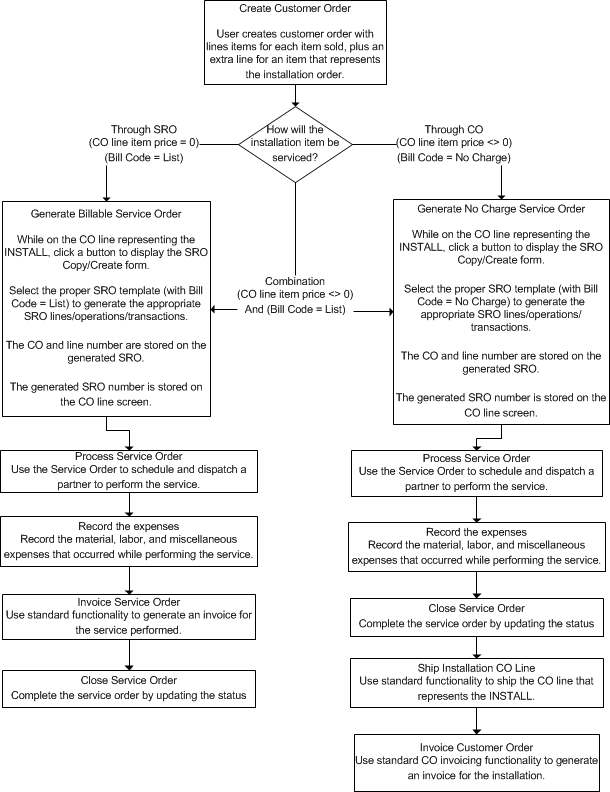Linking Customer Orders to Service Orders
As customer orders are created, line items on the order can be cross-referenced to a service order allowing service charges, such as installation of the part sold, to be linked to the original sale. You can use scheduling, cost tracking, and other service-related features to help manage the installation process, as shown in this diagram:

Customer Order to Service Order Relationship
Not only does the customer order line show the SRO to which it is associated, but the SRO header shows the customer order and line from which the SRO was created. When the service order is created, you can specify an SRO template. The new SRO inherits the customer number of the order, and the SRO lines that are created are set to match the customer order lines. Customer order shipping transactions display the SRO number of each customer order line to alert you that a service task exists.
Invoice Support
Depending on how your system is implemented, the price of the service order can be displayed and handled through customer order invoicing, through the service module, or through both. When the line item of the order contains a zero price value, the SRO can be set up as list and processed through Service Order Invoicing. When the line item of the order has a value greater than zero, the SRO can be configured as no charge and no SRO invoice is generated in the service module. When the line item of the order has a value greater than zero, the SRO can also be configured as list to record additional installation charges within the Service module.
Cost and Revenue Connection
To link the cost of service with the price of the customer order, use one of these options:
- Product Code Setup: If the cost versus revenue association only needs to occur at the general ledger level, you can set up the installation SRO to use the same product code as the item that is placed on the customer order. Revenue is recognized as the customer order is shipped, and cost is recognized as transactions are posted to the SRO.
- SRO Line Return to Inventory: Use a lot-tracked or serial-tracked item to represent the installation process. Use the SRO line Return to Inventory transaction upon completion of the installation process to place the installation item back into inventory with the rolled up costs associated with the SRO. Then, when you ship the CO Line, the item cost is used as the COGS entry associated with the customer order.
- Custom Reporting: Using the cross-reference between the Customer Order Line and SRO Header, you can write a custom report to associate the price on the customer order line with the rolled up costs on the installation SRO.